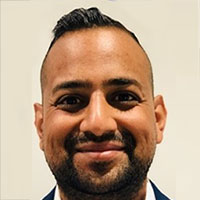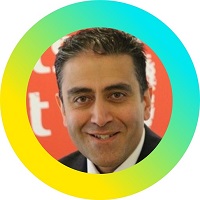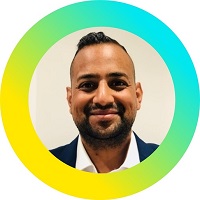Innovation in Healthcare
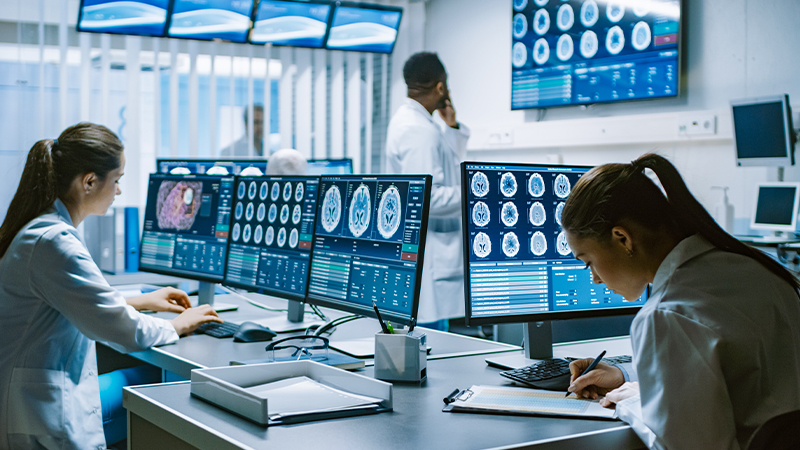
Productive, Predictive and Personalised Healthcare
With patients at the heart of healthcare, time saving measures and driving efficiencies is critical. Every minute saved for clinicians, is an extra minute to care for patients.
Fujitsu is bringing together an eco-system of technology partners to help the NHS to invest in their digital foundations. Increase workforce productivity and wellbeing and as a result, improve the patient experience and flow through the healthcare system.
By embracing all three elements, healthcare organisations can begin to harness digital transformation to enable productive, predictive and personalised healthcare.
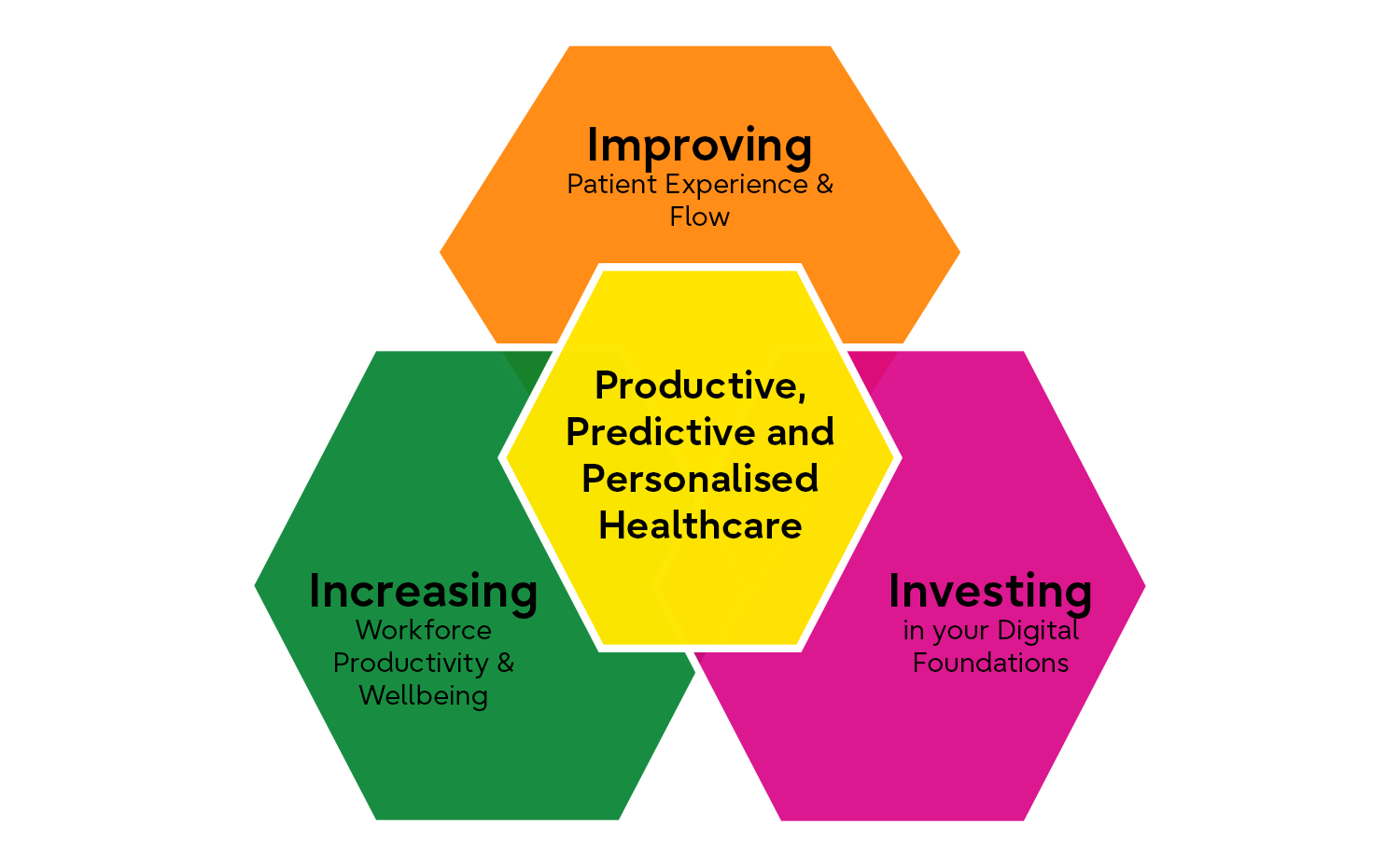
Pre-screening for cancer & mental health
Challenge: 1 in 2 people will develop some form of cancer during their lifetime. For cancer treatment, there is a referral system and national guidelines but this process can take up to 2 weeks for urgent referrals.
Solution: Through Fujitsu Advanced Image Recognition (F|AIR), this technology would enable pre-screening of patient conditions to aid the overall diagnosis process and also support the Physician’s decision making process.
Benefits- Where trialled, F|AIR has resulted in a 75% time reduction in manual effort in diagnosing cervical cancers with 80% accuracy
- In brain aneurysm trials, AI-enabled diagnostic software could dramatically reduce the time taken to review each scan from 15 minutes down to just 2 minutes
- Freeing radiologists time to focus on other patients and higher value tasks
- Significant cost savings and thus has the potential to save lives by detecting aneurysms that might otherwise be missed by the human eye
Remote Patient Monitoring
Challenge:Many NICE care pathways for chronic illnesses such as diabetes require frequent monitoring of vitals signs. Monitoring these consumes a lot of outpatient slots and if they are not monitored properly can lead to patient deterioration and re-admission rates.
Solution: Remote monitoring can be used to capture patients’ vital signs for different care pathways without needing to attend the hospital. Clinicians have access to a dashboard and are alerted when a patient is at risk. Analytics capabilities can improve the care pathways over time and help identify risks earlier.
Benefits- Reduced number of patients attending outpatient appointments, visits to the Emergency Department and re-admission
- Increased patient activation levels, with patients empowered to manage their own health at home
- Improved care with clinical decision support
Patient Wayfinding and Flow
Challenge: Hospitals contain an extensive network of corridors which link the various departments and hospital facilities. For patients, friends & family, it can be difficult to navigate through the hospital, which can result in unnecessary stress and potentially late arrival for appointments. New hospital staff can face similar challenges, which can result in wasted time & decreased productivity.
Solution: Fujitsu’s Wayfinding solution, uses beaconing functionality within a Wirepas Mesh. Nodes are able to transmit standard Bluetooth beacon messages, which are used in Esri’s ArcGIS Indoors solution for indoor mapping and navigation. The ArcGIS Indoors mobile application offers state of the art bluedot indoor positioning, wayfinding and turn-by-turn navigation. This enables the user to get accurate positioning in real-time on their mobile phone, find points of interest and people and navigate to them.
Benefits- Improves clinicians journeys through the hospital and increases their productivity
- Patients will be able to find their way through the hospital and ensure that they are on time for their appointments and not stressed
- Improves the overall hospital visit experience for patients, friends & family
Self registration in emergency department
Challenge: Currently patients are registered in A&E by a admin staff or even a nurse. This can cause bottlenecks in the A&E patient flow, in 97 trusts more than 1 in 5 patients spend over 4 hours in A&E. New hospital staff can face similar challenges, which can result in wasted time & decreased productivity.
Solution: Self registration for patients arriving at A&E on a dedicated kiosk will capture patients information and details of injury. By linking this data to their existing patient records and it shares the information with the triage team. Helping them assign the appropriate priority.
Benefits- Helping to meet Emergency Department targets
- Reducing delays for patients
- Freeing clinicians to focus on delivering patient care
Bed Management
Challenge: Keeping the flow of patients moving through hospitals has a significant impact on the safe and efficient performance of health and social care settings. Many hospitals are reliant on paper or spreadsheets for bed management. Written reports are collated and gathered from daily visits and phone calls to the wards by bed management staff, but are held by an admin team that are typically open in office hours only. There is no solution for hospital or indeed system wide availability of beds across health and social care.
Solution: Patient Bed Management replaces the paper trail and brings the patient and clinician closer together to deliver improved digital care by displaying live bed statuses for all patients and wards via interactive whiteboards. Reliance on paper wall charts, whiteboards and spreadsheets are replaced with a complete view on one digital screen. Staff can collaboratively view and update information on transfers, admissions, waiting times, pre-admissions, bed vacancies and expected length of stay for each patient. The solution integrates with other systems allowing patients to have a smoother, less stressful transition to an inpatient ward.
Benefits- Helping the hospital to predict activity allowing bed managers and clinicians to forecast bed status with more accurate data, and plan more effectively
- The hospital can approve ward transfer requests and raise emergency bed requests in real time, saving huge amounts of resource and stressful waiting time for patients
- Inpatients can be searched to give their exact location, their journey around the hospital, and a complete set of online real time notes, making communication with visitors, relatives and other care pathways significantly easier and ultimately improving the patient experience
Digital Diary
Challenge: Patients who have been admitted to Intensive Care often have little or no memory of their stay. This causes a gap in their understanding of what is happening to them, causing stress and anxiety. Studies show that around 1 in 10 patients with an ICU stay of 48 hours or more develop PTSD *
*Jones C et Al 'Precipitants of post-traumatic stress disorder following intensive care: a hypothesis generating study of diversity in care.' Intense Care Med 2007;33(6):978-985
Solution: Digital diary is our secure solution co-designed with clinical staff for patients and their relatives to monitor and support patient recovery. Digital diary helps patients to understand more of their stay in the hospital, their illness and progress made during the recovery process. Entries include daily journal updates, photographs, and milestone badges. Friends & family of the patient can view journal entries, comment, monitor progress and provide support to their loved ones, increasing the frequency and quality of communication with the medical teams.
Benefits- Improved patient experience by helping patients piece together events, reduce anxiety and the risk of patient developing PSTD. A study on the impact of ICU diaries on the incidence of PTSD found the incidence was reduced from 13% down to 5% in those receiving the diary.**
- Increased time for patient care by reducing the time clinical staff spend updating patient family members by phone allowing them to focus on delivery of care
- Improved family experience by increasing the ease in which a family can communicate with the care team and enhancing the quality of information shared
**Jones C, et al ‘ Intensive Care diaries reduce new onset PTSD following critical illness: a randomised, controlled trial. Critical Care ‘2010
Equipment Tracking
Challenge: On average, 1 in 3 nurses spend at least one hour or more searching for missing equipment, per shift – this includes looking for equipment such as infusion pumps, drips and blood glucose machines. This adds up to 40 hours spent searching on equipment per month, for each nurse.
Solution: We can solve this problem by utilising Globeranger’s iMotion Internet of Things (IoT) platform, and tagging equipment such as surgical tools, pumps, monitors and wheel chairs. Equipment can be monitored through a supporting infrastructure across the hospital. By combining this technology with an IoT Event Processing Platform and setting up a data plane, hospitals can access a visual representation of the location of assets.
Benefits- Time savings of up to 40 hours per month, per nurse
- Higher quality patient care due to increased direct care time from nurses
- Reduction in stress levels and stress related sickness for nurses
- Greater utilisation of assets resulting in purchase/leasing cost avoidance
- Cost savings from less equipment going missing
Imaging Anywhere
Challenge: Radiologists are in demand across the globe. This is partly due to the increasing use of imaging in care pathways as part of diagnosis and therapy. As well as second opinions and collaboration being at the heart of how radiologists do their jobs. The equipment they use requires specialist software, dedicated monitors and powerful workstations, all certified to ensure that radiologists can accurately analyse the topographic images at up to 4k resolution and not make an accidental errors. VPNs do not provide a reliable enough connectivity for the software to operate, laptops are not up to the job and consumer displays are not appropriate. This mass of equipment has meant that radiology departments take up a great deal of space in the hospital. On top of all of this, overtime is a huge challenge for radiologists, collaboration is difficult and consolidation of information between partnerships and ICS’s is impossible.
Solution: Our solution means that radiologists can analyse and report on scans from home, avoiding the need to use hospital workstations. The solution is based on our cloud technology to remove the need of powerful workstations but is reliable enough to be as good as the experience in the hospital. Using fast, secure connections, radiologists can share their diagnostic information with their hospital colleagues, in real time.
Benefits- More flexibility as radiologists can diagnose and treat patients from different hospitals to address the overtime challenge – boosting productivity
- Increased hospital space as radiology can be taken out of the hospital with space returned for other clinical duties that must be done on campus – saving costs
- Better collaboration – cross platform working and consolidation across trusts
Abscond-risk Patient Tracking
Challenge: Dementia patients often go missing from their hospital wards or in care homes and staff spend time locating them. The average time searching to locate a wandering resident in a care home is 311 seconds.
Solution: We can solve this problem by utilising Globeranger’s iMotion Internet of Things (IoT) platform, and tagging high risk patients and care home residents. Patients can be tracked through a supporting infrastructure across the hospital or care home and a data plane can be set up to create a visual dashboard of the patients locations for clinicians and staff to see.
Benefits- Reduced absconding patient rates – staff can monitor patients location remotely and intervene
- Minimal patient incidents – absconding patients can be located as quickly as possible, saving time and reducing risk
- Improved data on absconding patients – a centralised databased with the potential to identify patterns
- Decreased patient distress and clinician stress
Clinician On boarding
Challenge: Locum and staff-bank rotations create challenges for all hospitals, in particular during the six-monthly rotation of junior doctors. When staff rotate roles, training and paperwork is repeated and they don’t have immediate access to systems – losing out on utilized days.
Solution: Digital workflows can be used to upload key documentation from home, while also enabling immediate, auditable access to critical hospital systems.
Benefits- Improved clinician on-boarding experience
- Increased productivity for staff and the hospital – increasing clinician time for patient care
- Single destination for clinician on-boarding services, accessible from any supported device
Monitoring Blood Temperatures
Challenge: Hospital fridges must be monitored to ensure that blood is stored at the correct temperature until use so that the cold chain is not broken. The Cold Chain must be tracked to comply with CQC and Audit KPIs. Currently, fridges are manually checked and annotated every 4 hours by nurses, which not only detracts from the delivery of patient care but leaves opportunity for human error especially when nurses are busy i.e. they could forget to check. This could result in the wastage of blood products.
Solution: With IoT Sensors, blood temperatures can monitored by automatically recording fridge temperatures and ensuring that blood products are stored at the optimum temperature. If the fridge temperature rises above or falls below the required range an alert will inform hospital staff so that appropriate action can be taken. Blood bag tracking with safe temperature indicators can be used to track the cold train right up to the point of transfusion.
Benefits- Meet CQC requirements and national reporting standards
- Minimise wastage of blood – the cost of a waste unit of blood following processing, storage and transport can cost up to £128.99
- Reduce human error in audit trail
Workforce Automation
Challenge: 50% a nurses day is currently spent on clinical documentation. There are a whole host of administrative tasks that currently consume the time of Healthcare staff, taking away from care delivery to patients.
Solution: Robotic Process Automation (RPA) uses software to emulate human interaction with applications and systems, typically using a standard user interface (UI). Bots can be used to automate many different processes in healthcare; scheduling patient appointment, self-registration in A&E, financial processing, national reporting.
Benefits- Staff can focus on more high value tasks and patient care, whilst RPA focuses on the completing the repetitive tasks
- Decreased operational and staff costs
- Reduced errors and improved efficiency
Ambulance Handover
Challenge: The average ambulance turn around time (time from ambulance arrival to crew clear) in winter is 44 minutes against the target of 30 minutes. Ambulance handover time can be broken into: Patient handover from the ambulance team within 15 minutes of arrival | Ambulances being back on the road, ready to respond to further calls in 15 minutes
Solution: Our Ambulance Arc solution will tackle part 2 of the handover process, enabling ambulances to be back on the road, ready to respond to calls quicker. We can solve this problem by utilising Globeranger’s Ambulance Arc and iMotion Internet of Things (IoT) platform, by Checking status / preparation of vehicles about to go into service by tagging assets in the ambulance and scanning the vehicle when in range by using Wi-Fi Tracking critical assets in and out of designated storage areas by using RFID readers We will combining this data with an IoT Event Processing Platform to provide dashboards for a visual representation of the location of assets and reporting.
Benefits- Time saved for the ambulance team as staff can remotely check the inventory of medication and expiration dates of medical supplies in the vehicles and inventory
- Improved data on assets in a centralised database
- Reduced loss of mobile/portable assets in the vehicle and inventory
- Increased efficiencies as maintenance schedules for vehicle equipment can be effectively monitored
- Digital Hospital Xccelerator
Challenge: With COVID-19 accelerating the need for the NHS Trusts to go digital and respond quickly and flexibly to patient demands, now is the time to invest in your foundations to set you up for digital transformation and longer term resilience.
Solution: Fujitsu’s DHX will measure your technical infrastructure and identify recommended benchmarks to reach to support your digital transformation. Our team will work with you to understand your business drivers, challenges and clinical outcomes. We’ll assess your applications estate and IT landscape to produce a industry recognised benchmarking score and strategic roadmap for transformation driven by business benefits and clinical outcomes. After 6 weeks, Fujitsu will provide you with recommendations , benefits and a roadmap for a stable technical infrastructure to help you realise all the benefits from your digital investments.
Benefits- A globally recognized HiMSS INFRAM score for digital maturity and benchmarking
- Characterization of your IT infrastructure and information maturity to accelerate digital transformation
- Management of risk in your technology investments with a roadmap for maximising ROI aligned to the Trust’s business and clinical outcomes
- An evaluation to support Trust wide collaboration and patient services with a roadmap for improved management of patient data, security and reduced cyber risk
Cloud
Challenge: With COVID-19 triggering the need for the NHS to be able to respond quickly and flexibly to patient demands, now is the time to invest in your digital foundations to set you up for longer term resilience.
Solution: Fujitsu’s Cloud Assessment will assess your current NHS estate and determine a measured but agile path that will enable the adoption and consumption of Multi-Cloud services, co-creating world class digital solutions without impact on NHS operational services. We will work with you and your team to understand your business drivers and challenges. We’ll assess your application and IT landscape to produce a set of inventory data for analysis. Fujitsu will provide you with a set of options, benefits and indicative costs for migrating your applications and services to the cloud.
Benefits- Cost savings – with less real estate, highly automated and autonomous services, CAPEX is reduced
- Realize the commercial potential of data while delivering novel patient centric services and digital patient interaction
- Real time access to the right information, anytime, anywhere improving clinical collaboration and end user experience
- Resilient and secure service that is fit for purpose in the post COVID19 world, delivering effective flexible working for both clinical and administrative tasks
Workplace Services
Challenge: Clinical staff, who are already stretched, are having to deal with unnecessary frustrations and bottlenecks, set against the backdrop of COVID-19 and winter pressures. Typically there’s only 1 device available for every 5 clinicians and when they do gain access to the device, they end up wasting time trying to log on or waiting for applications to load due to poor Wi-Fi Clinicians need to be spending their time and effort on patients rather than trying to make the IT work.
Solution: With Fujitsu’s Workplace Services package for the NHS, we can take from you from your current state to N365 within 18 months. With our solution, we are able to containerise legacy applications that are not compatible with Windows 2010 or N365 to ensure no applications are left behind and therefore all common workstations within the hospital can be transformed without exception. An enhancement to the current IT services, would better enable collaboration, free up time for further quality clinician-patient interaction and ultimately benefit all patients receiving care, which is something that we want for ourselves and society.
Benefits- Reduced absconding patient rates – staff can monitor patients location remotely and intervene
- Minimal patient incidents – absconding patients can be located as quickly as possible, saving time and reducing risk
- Improved data on absconding patients – a centralised databased with the potential to identify patterns
- Decreased patient distress and clinician stress
Clinician On boarding
Challenge: Locum and staff-bank rotations create challenges for all hospitals, in particular during the six-monthly rotation of junior doctors. When staff rotate roles, training and paperwork is repeated and they don’t have immediate access to systems – losing out on utilized days.
Solution: Digital workflows can be used to upload key documentation from home, while also enabling immediate, auditable access to critical hospital systems.
Benefits- Increased time spent with patients and improved workforce productivity
- Enabling better collaboration and flexibility for clinicians, by equipping them mobile devices whilst they’re on the move around the hospital
HIMSS Digital Maturity Assessment
Challenge: The NHS Long term Plan puts digital maturity at the top of the agenda, outlining the practical priorities that will drive this change and improve the patient, staff and citizen experience. New models of care will mean that clinicians are supported by digital tools and patients can benefit from predicative, personalised and preventative treatment. Digital Maturity Assessments help Trusts understand their current landscape and how they can reach this desired future digital state.
Solution: HiMSS Analytics provides the toolkit for healthcare leaders to understand their current technology landscape and measure a baseline digital maturity to monitor and measure service improvement against. As a HiMSS certified organisation, we provide education and guidance to help you progress through the HiMSS maturity model stages and support you through your digital journey.
Benefits- Gain public recognition for digital excellence
- Increase visibility of digital landscape with Senior Management
- Identify key projects to increase digital maturity
- Develop a digital strategy and prioritise projects
- Justify investment for digital transformation projects
Improve healthcare outcomes with Fujitsu Healthy Living
Whether you need AI to uncover data trends, quantum-inspired computing to shorten drug discovery periods, new IT architecture for a better patient experience, or innovative technology to optimize operating room scheduling, we have the services and solutions to overcome your challenges and unleash your full potential.
We have the proven expertise to help you achieve your transformation goals – from keeping up with increasing demand and building robust, connected systems to overcoming cost concerns and creating a more sustainable future.
Fujitsu products for Healthcare
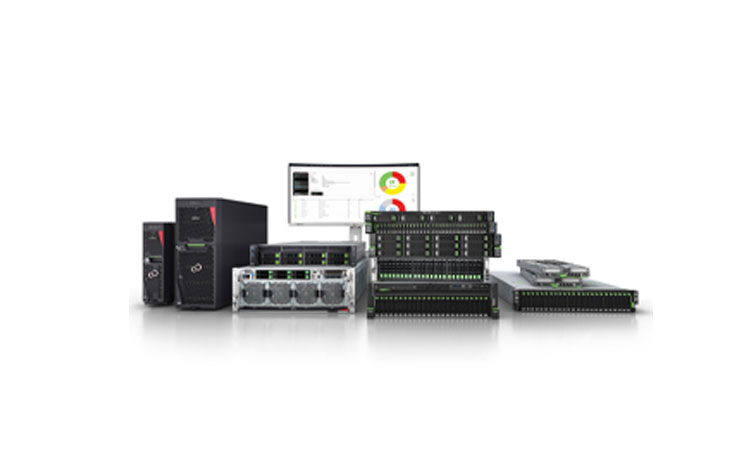
PRIMERGY
Fujitsu PRIMERGY Server systems deliver workload-optimized x86 industry standard servers that can meet the needs of any business.
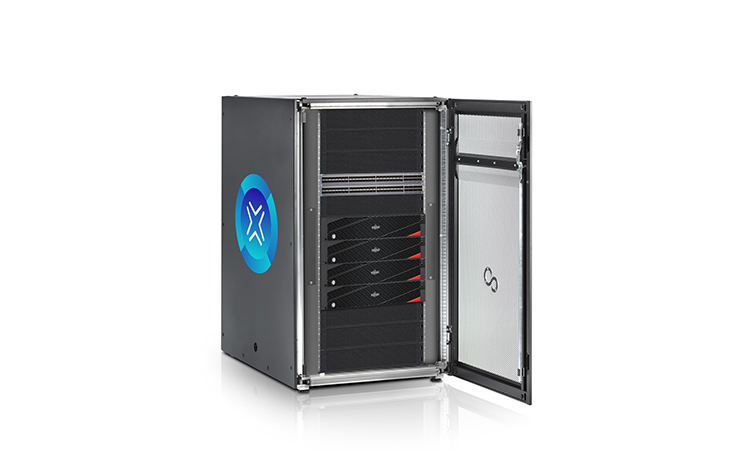
PRIMEFLEX
Fujitsu can provide an integrated system that brings the agility and fast-paced innovation of cloud computing to on-premises environments: PRIMEFLEX.

VDI
Fujitsu offers one of the industry's most complete VDI portfolios. It covers a broad range of client and data center solutions and services and is complemented with products from strategic technology partners.
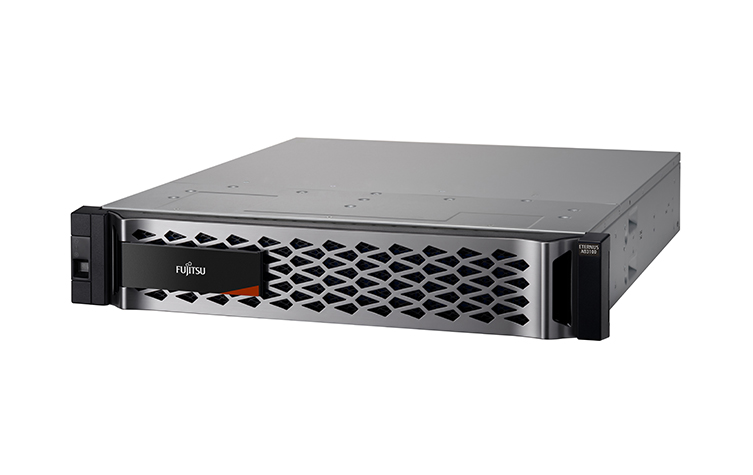
ETERNUS
Combining ETERNUS storage systems with our portfolio of comprehensive services and leading partner technologies, we deliver optimal data storage solutions that deliver the right data service levels and reduce costs.

LIFEBOOK
Quality and reliable notebooks for wherever you choose to work. Whether you're in the library or attending a digital lecture on the go, the flexible FUJITSU LIFEBOOK range empowers you with extensive configuration option and powerful individual settings.
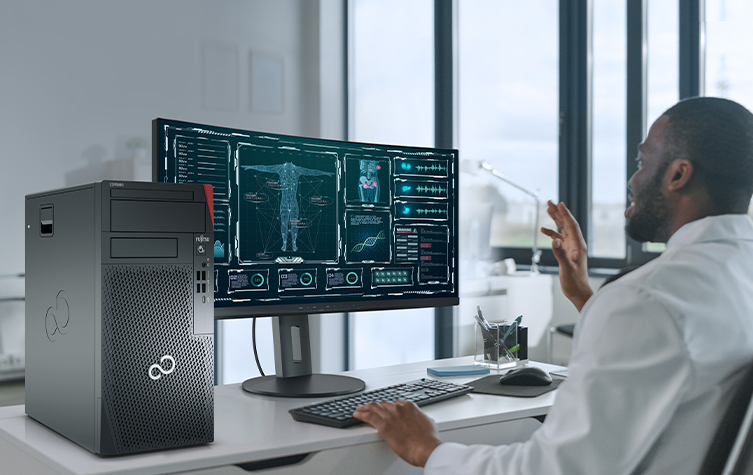
CELSIUS
Whisper quiet with built-in capabilities to support creativity, simulation and visualisation, CELSIUS workstations offer the professional quality you need. Optimised for use with a host of leading applications, CELSIUS workstations can come as mobile, desktop or rack.
Purpose-driven partnerships
Enabling your people, your customers, and your entire business with the right technologies, applications, and systems is a collective endeavor. That's why we've built a global ecosystem of leading technology vendors and other organizations to help you leverage the power of digital to drive your purpose and build trust.
We connect the right services and financial technologies together to shape your unique ecosystem so it's aligned with your business objectives and capable of adapting to new needs as they develop.

An Innovation Story at Leeds Teaching Hospitals NHS Trust
Hear first hand from Professor David Brettle, Chief Scientific Officer at Leeds Teaching Hospitals NHS Trust and other colleagues on how driving research and innovation with technology can accelerate and transform patient treatment and care.

